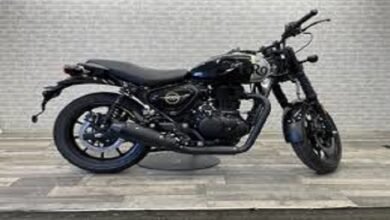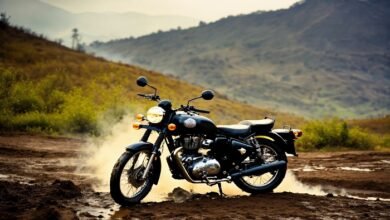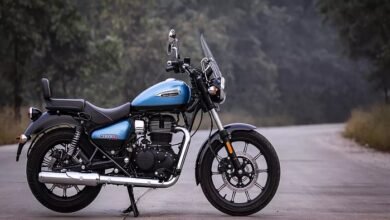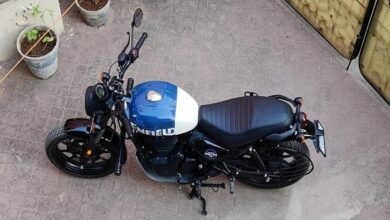Hunter 350 Mileage: Maximizing Efficiency and Performance

Introduction
When it comes to motorcycles, one of the critical factors that potential buyers and current owners consider is mileage. The Royal Enfield Hunter 350, with its blend of classic design and modern performance, is no exception. This blog post dives deep into the mileage of the Hunter 350, offering insights on how to maximize fuel efficiency, understanding the factors affecting mileage, and addressing frequently asked questions.
Overview of the Hunter 350
The Royal Enfield Hunter 350 is a tribute to the timeless charm and rugged performance of its predecessors. With a robust build, advanced engineering, and a retro design, it appeals to both classic bike enthusiasts and modern riders. One of the key attractions of this model is its efficient mileage, making it a practical choice for daily commutes and long rides alike.
What is Mileage and Why It Matters?
Mileage, often referred to as fuel efficiency, is the distance a vehicle can travel per unit of fuel. For motorcycles like the Hunter 350, mileage is a crucial factor because it affects running costs and environmental impact. High mileage indicates better fuel efficiency, leading to lower fuel expenses and reduced carbon footprint.
Official Mileage Figures for the Hunter 350
Royal Enfield officially claims that the Hunter 350 delivers around 35-40 kilometers per liter (km/l) under standard test conditions. However, actual mileage can vary based on several factors, including riding habits, road conditions, and maintenance practices.
Factors Affecting Hunter 350 Mileage
Riding Style
Aggressive riding, frequent acceleration, and high speeds can significantly reduce mileage. Smooth and steady riding helps in maintaining optimal fuel efficiency.
Maintenance and Tuning
Regular maintenance, including timely oil changes, air filter cleaning, and proper tuning of the engine, ensures that the bike runs efficiently, thereby improving mileage.
Tire Pressure
Under-inflated or over-inflated tires can affect the bike’s mileage. Maintaining the recommended tire pressure is crucial for optimal fuel efficiency.
Load and Weight
Carrying excessive weight or riding with a pillion can reduce the bike’s mileage. It’s essential to be mindful of the load to maintain good fuel efficiency.
Tips to Improve Hunter 350 Mileage
Regular Maintenance
Adhering to the bike’s maintenance schedule, including oil changes and air filter replacements, keeps the engine running smoothly and efficiently.
Smooth Riding
Avoiding rapid acceleration and maintaining a steady speed can significantly improve mileage. Using higher gears at appropriate speeds also helps.
Proper Tire Inflation
Regularly checking and maintaining the correct tire pressure can prevent unnecessary drag and improve fuel efficiency.
Reducing Idle Time
Turning off the engine during long stops, such as at traffic signals, can save fuel and improve overall mileage.
Real-World Mileage: Rider Experiences
While official mileage figures provide a benchmark, real-world experiences offer valuable insights. Many Hunter 350 owners report achieving mileage figures close to or even exceeding the official claims, especially with careful riding and regular maintenance.
Comparisons with Other Models
Hunter 350 vs. Classic 350
Both models are renowned for their performance and design, but the Hunter 350 often edges out the Classic 350 in terms of fuel efficiency due to its newer engine technology and lighter frame.
Hunter 350 vs. Meteor 350
The Meteor 350, another popular Royal Enfield model, offers similar mileage figures. However, the Hunter 350’s design and ergonomics may provide a slight advantage in urban riding conditions.
Long-Distance Riding and Mileage
The Hunter 350 is not just a city bike; it’s also capable of handling long-distance rides. Riders embarking on long journeys often find that maintaining a consistent speed and following best practices for fuel efficiency can result in impressive mileage figures over extended distances.
Eco-Friendly Riding: Reducing Carbon Footprint
Improving the Hunter 350’s mileage doesn’t just save money; it also contributes to a lower carbon footprint. Efficient fuel usage means fewer emissions, making it an environmentally friendly choice for conscious riders.
Conclusion
The Hunter 350 stands out not only for its classic design and robust performance but also for its commendable mileage. By understanding the factors that affect fuel efficiency and adopting best practices, riders can maximize the mileage of their Hunter 350, making it a cost-effective and environmentally friendly choice.
FAQs
1. What is the average mileage of the Hunter 350 in city conditions? The Hunter 350 typically offers around 35-40 km/l in city conditions, depending on riding habits and traffic.
2. How can I improve the mileage of my Hunter 350? Regular maintenance, smooth riding, proper tire inflation, and reducing idle time can help improve mileage.
3. Does the load affect the mileage of the Hunter 350? Yes, carrying excessive weight or riding with a pillion can reduce the bike’s mileage.
4. How often should I service my Hunter 350 to maintain good mileage? Following the manufacturer’s recommended service schedule, usually every 3,000-5,000 kilometers, helps maintain optimal mileage.
5. Is the Hunter 350 suitable for long-distance rides considering its mileage? Yes, the Hunter 350 is suitable for long-distance rides, offering good mileage when ridden at consistent speeds with proper maintenance.





